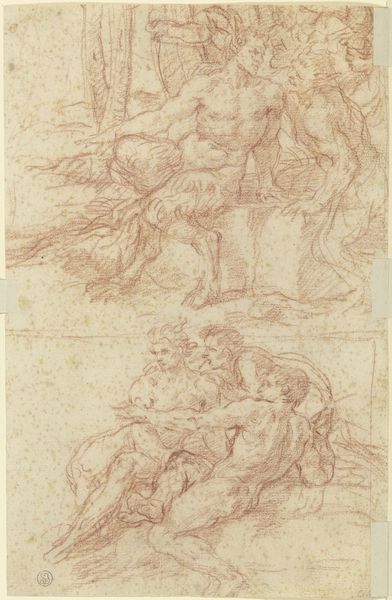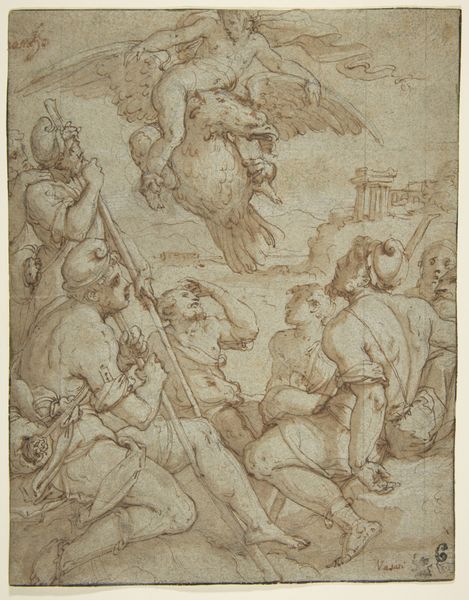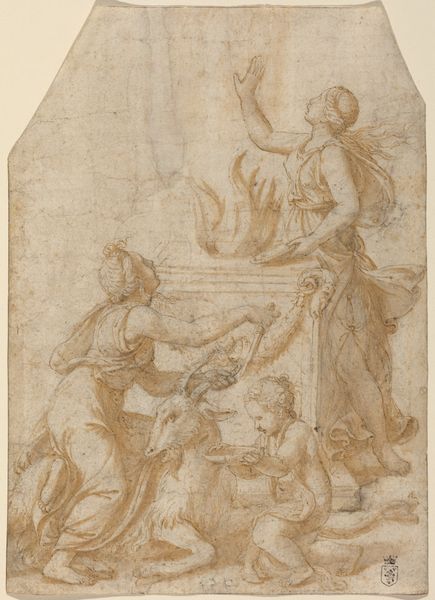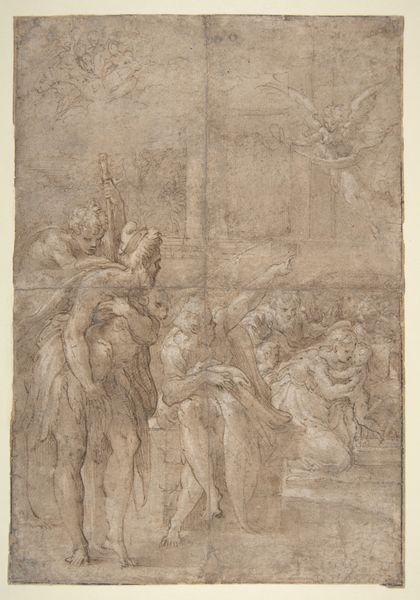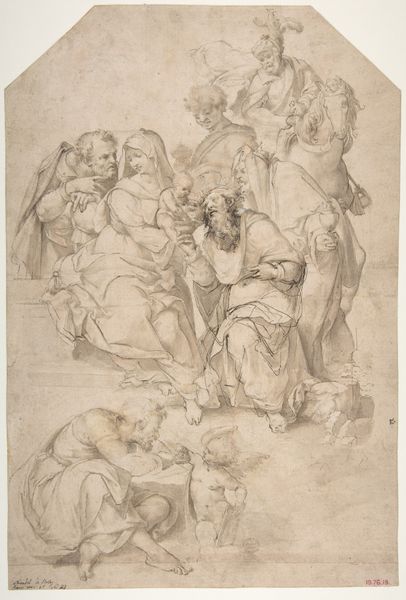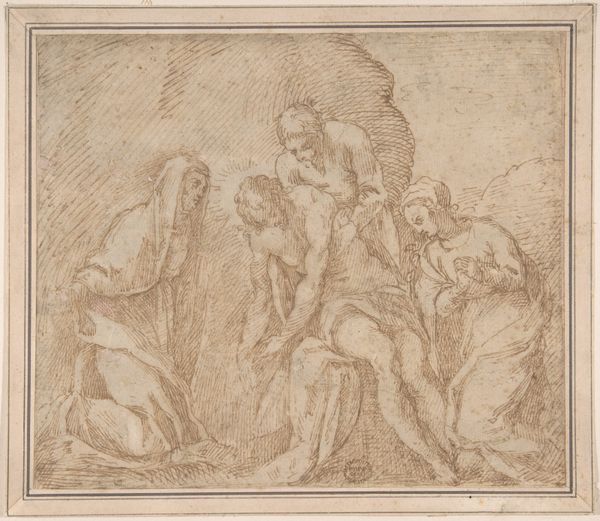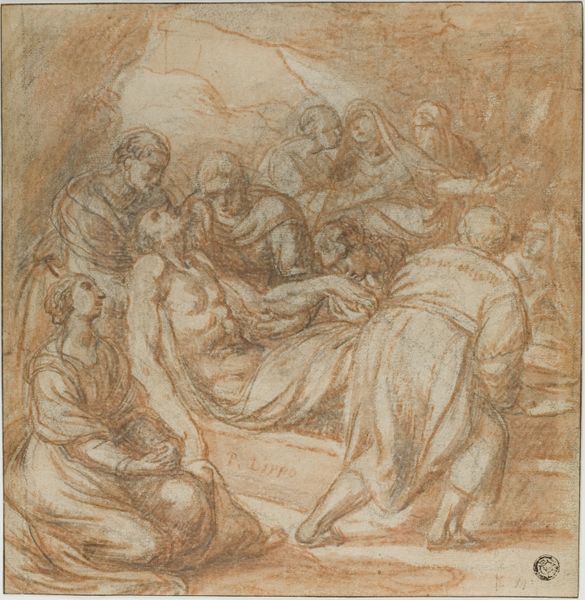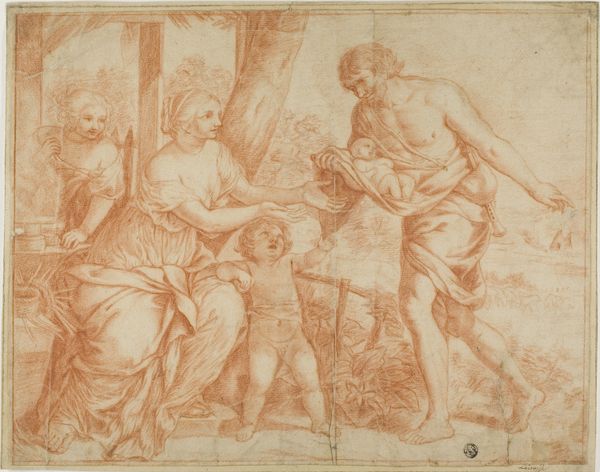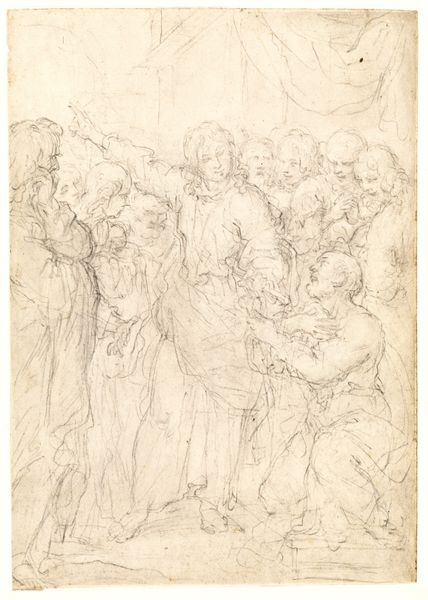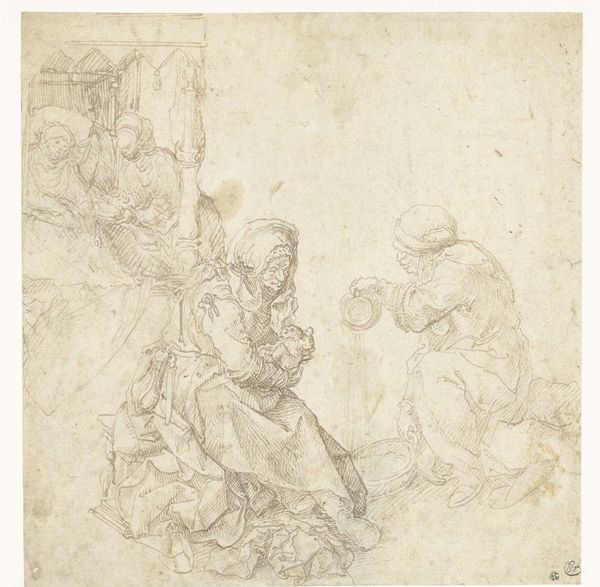
The Holy Family with the Infant St. John the Baptist and an Angel 1477 - 1523
0:00
0:00
drawing
#
portrait
#
drawing
#
figuration
#
11_renaissance
#
line
#
history-painting
#
italian-renaissance
#
angel
Dimensions: 6 5/8 x 4 13/16 in. (16.9 x 12.2 cm)
Copyright: Public Domain
Editor: So, this drawing is called *The Holy Family with the Infant St. John the Baptist and an Angel*. It’s by Cesare da Sesto and was created sometime between 1477 and 1523. It feels intimate and like a snapshot despite the obviously staged figures, mostly in a reddish chalk. How do you interpret this work within the broader context of art and its role in society? Curator: Well, immediately, I notice the drawing's function in that period. Red chalk wasn’t just about sketching; it was frequently used for preparatory drawings, ‘cartoons’ as they were sometimes called. Think about how artists were patronized, and that most large projects, like frescos or altarpieces, were highly visible, public works meant to uphold specific doctrines of the Church or display wealth. Now consider a drawing like this; what does it tell us about artistic practice *behind the scenes*? Editor: That’s interesting, I never thought about that before! I mean, it being a preliminary sketch makes sense, but what was the social status of sketches? Were they really ‘art’ with a capital ‘A’? Curator: Exactly! Were they commodities in their own right? Or tools in a much larger operation controlled by the patrons. And also, to whom was an image of a family and angels circulating? Art in Renaissance Italy wasn’t a free-for-all; there was constant negotiating on a case-by-case basis. These were all potential constraints the artist may have had to deal with. What does this dynamic, with its power imbalances and restrictions, tell us about the politics of imagery then and now? Editor: It shows how loaded artistic choices can be with a lot of things besides just personal preference. Curator: Right. Da Sesto had to think about audience and purpose. The placement, gestures…everything contributed to communicating the Holy Family. We can only interpret and attribute potential function through drawings and their relationship to finalized artistic productions, in order to discuss meaning in a larger historical context. Editor: It’s a reminder that artworks, even preliminary sketches, aren’t created in a vacuum, but reflect specific power dynamics and cultural contexts. Thanks, that definitely reframes my initial view.
Comments
No comments
Be the first to comment and join the conversation on the ultimate creative platform.
